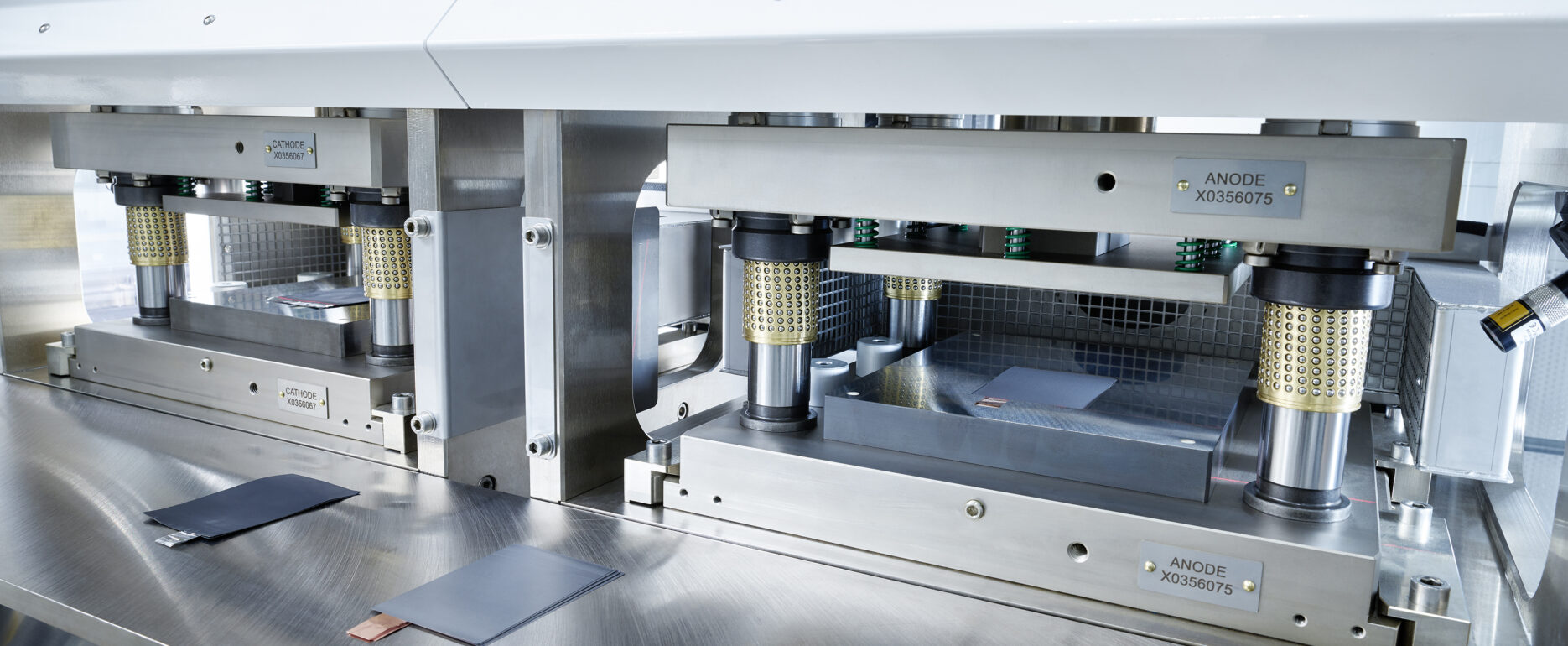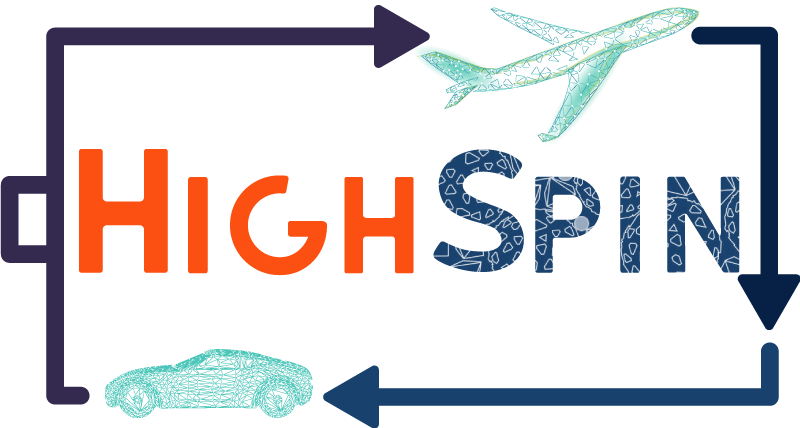Materials
Cathode with 3.0 g/cm3 density and anode with 20 wt. % of Si (730 mAh/g capacity). Stable electrolyte up to 5.0V.
Assesment
Testing as part of the materials development, assessment of the performance in 1st and 2nd life (including LCA, costs, and TRL). Demonstrated recyclability, at 90% recycling efficiency.
Processes
Ultrafast 3D electrode multilayer coating and laser structuring at a speed of ≥ 5 m/min against LNMO||Si/C.
Time-to-market
TRL scale-up of the HighSpin LNMO||Si/C to enter the market as “second-step Gen. 3b” LIB in 2028 (automotive) and 2030 (aeronautics).
Demonstrators
LNMO cells at 390 Wh/kg and 925 Wh/l at a cost target of 90 €/kWh (pack level). 300 cells/150 CMUs produced and 2 sets of module demonstrators delivered at TRL 6.
Our team
A team of more than 60 researchers are involved in HighSpin, with 3 Ph.D. students supervised, one each at KIT, FZJ and CICE.

To achieve the objectives, the key project activities encompass:
HighSpin aims to demonstrate the developed technologies at the battery module level (automotive as well as aeronautic) at TRL6, and the recyclability of the developed cells using a direct recycling process as well as an advanced hydrometallurgical process.






